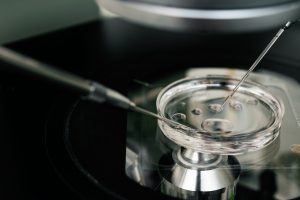An unfulfilled desire to have children can be extremely stressful. More and more couples decide for artificial insemination if it doesn’t work out naturally. However, this procedere does not always lead to good results. Many factors influence the success of IVF. In fact, the rate of successful pregnancies is only about 30 percent. Researchers are constantly looking for ways to increase the chances of conception.
If the Embryo Does Not Develop
Why do two-thirds of in vitro fertilization (IVF) embryos stop developing? Research published in the open access journal PLOS Biology show that many embryos stored for IVF experience characteristic genetic and metabolic changes that inhibit development. These results help to explain the loss of viability in many harvested embryos and may indicate strategies to increase the proportion of viable embryos.
Only about 30 percent of IVF embryos reach the blastocyst stage, the round ball of cells that begins to form the layers of cells that eventually develop into tissues and organs. There have been several hypotheses to explain this developmental arrest, but not a single explanation has been fully supported by experiments. Animal models have provided only partial insight into the human situation because many other species develop a much higher proportion of externally fertilized eggs.
Treatment With Resveratrol
To understand the inability of human embryos, the experts examined gene expression in arrested embryos. They found that a proportion of embryos (termed type 1) fail to make the transition from using stored maternal gene transcripts to activating the embryo’s own genome. This group was distinguished from two other groups (types 2 and 3) that successfully made this transition but showed down-regulation of several genes important to the dynamic events of early development. In particular, these included the reduced activity of genes encoding nucleosomes (proteins that organize DNA) and ribosomes (molecular factories that synthesize proteins), as well as factors critical to regulating cell division.
Such changes are characteristic of cells occurring during quiescence, a transient state, and senescence, a permanent loss of the ability to divide. Embryos of both types 2 and 3 showed low levels of glycolysis, a key set of energy-producing reactions, but differed in the level of oxidative phosphorylation, another energy-producing system. When the researchers treated these embryos with resveratrol, a small molecule that activates (among other effects) a number of metabolism-regulating enzymes, more than half of those embryos that had stopped restarted development, but less than 10 percent reached the blastocyst stage . While embryonic progression is possible with research, more research is needed to determine the best strategy for doing so.
Freeze All Embryos
Traditional IVF protocols involve transferring a fresh embryo into the uterus during the same cycle that the eggs were collected and freezing additional embryos for future use. Another approach to improving IVF outcomes is that all embryos derived from one egg retrieval cycle are frozen and transferred in a subsequent cycle. This “freeze-all” approach was originally developed as a strategy to minimize the risk of ovarian hyperstimulation syndrome (OHSS) in high-risk patients.
Research has shown that freeze-all protocols are indeed associated with significantly improved IVF outcomes – particularly in women over 35, a patient population that is part of the largest and most demanding category of women experiencing infertility. The study examined more than 16,000 IVF treatment cycles performed at 12 leading fertility centers in the United States. After adjusting for patient age and other variables (including preimplantation genetic screening), the analysis showed that freeze-all IVF was significantly associated with improved sustained pregnancy rates in patients over 35 years of age.
A benefit was also found in patients with elevated progesterone levels prior to egg retrieval. However, a diagnosis of polycystic ovary syndrome, endometriosis, tubal disease, or unexplained infertility had no significant impact on the effect of the freeze-all transfer. However, while the approach is promising, it is not yet widely used due to the lack of prospective randomization.





